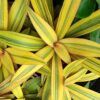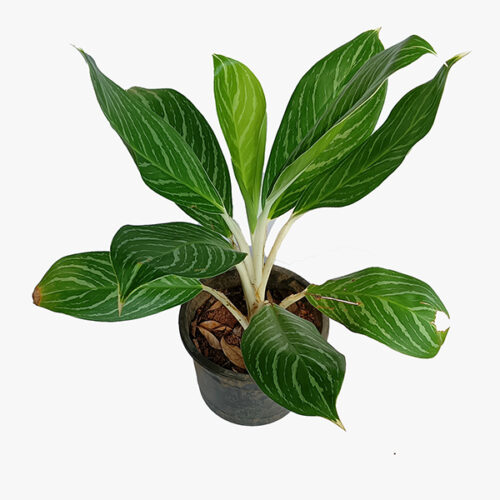Rhoeo tricolour OR Tradescantia spathacea or OYSTER PLANT:
These plants are an easy to care plants, displaying pink to white flowers. These are also called as moses-in the-cradle or moses-in-the-basket PLANTs. The leaves of the plant are long, the upper portion being dark Greek and the underside being purple in colour. The whole plant can read to a height of 6-8 inches. This plant comes under the succulent types.
?
HOW TO CARE FOR YOUR PLANT:
SOIL:
- A soil with acidic pH (5.0-6.5), well-draining, sandy-loam soil.
- These plants are drought tolerant, so a little dry soil won?t hurt.
LIGHT:
- Position your plant such that it gets indirect sunlight and protection from strong sunlight in the afternoon or else it will scorch/burn the leaf/ leaf fall.
- They require indirect sunlight for their optimum growth. Though they can be tolerant of the full sunlight, depending on the variety of the plant, the sunlight will affect the variegation in the plant.
WATERING:
- Water the plant only when 2-2.5 inches of the top soil has dried.
- Watering schedules to be taken care of especially during the warmest months of the year.
- Overwatering will lead to rotting of the roots. The signs of overwatering are browning of leaves tips.
- The plants dislike wet soil, and are more prone to root rot.
FERTILIZING:
- They generally do not need fertilizing but if you wish for a faster carpet cover of your backyard then once or twice during the growing season will be just fine.
PROPAGATION OF PLANT:
- Propagation to done preferably during spring season (March-April).
- Propagation is easier, since new plant grows from the sides of the parent plant.
- This new baby plant should be planted to a different place when the leaves are at least 4 inches long.
| ORIGIN | Central America |
| COLOURS ON PLANT | Purple, dark green |
| PLANT TYPE | OUTDOOR/INDOORS |
| SOIL | Acidic (moist) |
| LIGHT REQUIREMENT | Indirect sunlight; protect from afternoon sun |
| WATERING | When 2-2.5 inches of topsoil appears dry; frequent in summers |
| FERTILIZERS | Feed during mid-March or April |
| PROPAGATION | New plantlets |
| GROWING SEASON | Spring to summer |









Reviews
There are no reviews yet.